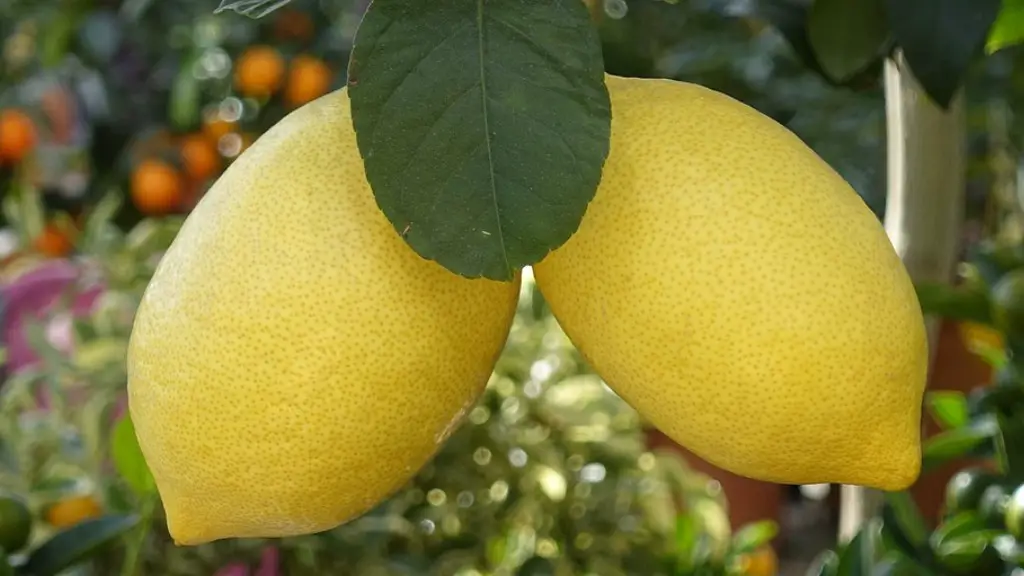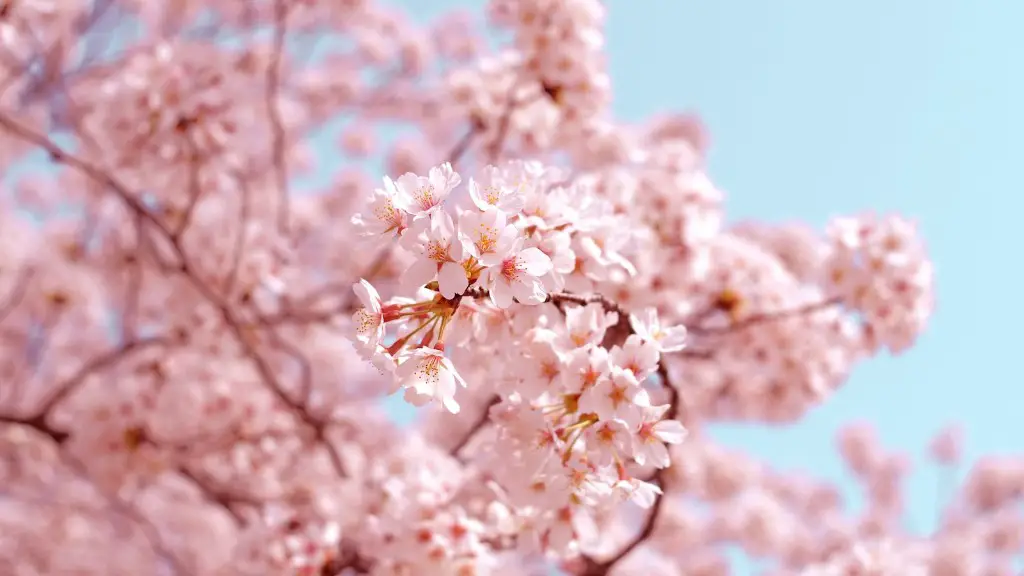The lack of growth in lemon trees may be caused by a variety of reasons. A comprehensive understanding of these factors and their potential solutions is necessary in order to get the most out of your lemon tree. Firstly, it must be ascertained if it is a nutritional deficiency, environmental stress, or disease that is causing the tree’s lack of leaves. Nutritional deficiencies can be corrected by a steady supply of nutrients. Soil that is lacking in the right nutrient balance should be tested and amended, if necessary. Lemon trees need regular watering, depending on the climate and the tree’s age, usually once or twice a week. Without sufficient watering, leaf development may suffer. Additionally, waterlogged soil or stones at the base of the tree, which reduce drainage, may also result in lack of leaves.
Environmental stress from too much sunlight or extreme temperatures can be addressed by providing the tree with adequate shade or windbreaks. Furthermore, too much fertilizer can be another source of environmental stress. Fertilizers should be used according to the manufacturer’s directions, sparingly. Finally, disease can manifest itself as a lack of leaves. Insect infestations can also be a factor in leaf wilt. Signs of disease and pest infestations should be addressed quickly, as they can both cause serious damage to the tree.
Nutritional Deficiencies
Nutritional deficiencies are a possible cause of a lemon tree’s lack of leaves. Commonly, soils deficient in nitrogen, phosphorus, or potassium will result in stunted plant growth. Regular fertilization and soil testing are necessary to make sure the lemon tree is getting the nutrients it needs. Signs that a soil is nitrogen-deficient are weak plants and thin foliage. Deficiency in nitrogen can be corrected with a regular feeding of nitrogen-rich fertilizer.
Lemon trees can also suffer from a lack of potassium, usually resulting in yellow spots or mottling of the leaves at the edges. Potassium can be replenished with proper fertilization or through the use of soil amendments. Soils that are phosphorus-deficient may show signs of stunted growth and dark green foliage, or a yellowing or reddening of the leaves. To correct this, phosphorous-rich fertilizers can be applied.
It is important to note that fertilizer should always be used with caution, as over-fertilization can cause environmental stress, burning of the foliage, and even death of a tree. Inadequate fertilization (or no fertilization at all) can also cause stunted growth, making it difficult for the lemon tree to reach its full potential.
Environmental Stress
Environmental stress from too much sunlight, heat or cold, or improper irrigation can severely impact a lemon tree’s growth. If the tree gets too much sunlight, the leaves may yellow and start to fall off. To rectify this, providing adequate shade or installing windbreaks can be helpful. If a tree is too exposed to extreme temperatures, the leaves may show signs of burn or wilt. Once again, shade or windbreaks can help mitigate this.
Inconsistent watering is another potential source of environmental stress. Depending on the climate and the tree’s age, lemon trees need a regular supply of water, usually once or twice a week. It is also important to check the soil at the base of the tree for waterlogged soil, stones, or other debris which can restrict drainage and decrease water uptake by the tree. Inadequate watering can render the soil unable to sustain the tree, resulting in a significant lack of leaves.
Extreme temperatures or extended periods of drought can also affect a lemon tree’s growth. In order to prevent this, mulching the tree or providing extra shade or protection from the wind can help reduce the chances of wilt or burn. To also help the tree cope with extreme weathers, adequate irrigation is recommended.
Disease & Pest Infestations
Diseases and pest infestations can also lead to a lack of leaves in lemon trees. Fungal diseases, bacterial infections, mites, aphids, thrips, and nematodes are some of the common culprits in this situation. Visible signs of infection, such as discoloring or wilting of leaves, can help to diagnose the problem. Effective treatments are available for combating these pests and diseases, such as fungicides, insecticides, or biological controls.
All pesticides, fungicides, and insecticides should be used with caution, and their instructions should be read carefully before application. Planting disease-resistant varieties of lemon trees may also be beneficial. Additionally, pruning the tree can help to remove the infested areas and encourage new growth.
Improper Grafting
Further to disease and pest infestations, improper grafting can also lead to a lack of leaves in a lemon tree. Grafting is a vital part of tree propagation, which involves joining two plants together so that the desired characteristics of one are passed on to the other. However, if the grafting is done incorrectly, the desired characteristics may not be passed on properly and the tree may not thrive.
When determining the cause of a lack of leaves in a lemon tree, be sure to inspect the grafting connection to make sure it is intact. If it is, the tree may be suffering from a nutritional deficiency, environmental stress, a pest infestation, or disease. Proper diagnosis and control can help bring the lemon tree back to life.
Fertilizers
Fertilizers are necessary for any plant to survive, but too much or too little can be detrimental. For lemon trees, the correct application of fertilizer is essential for healthy growth. Fertilizers with a high nitrogen content should be avoided, as this can cause the plants to fail to thrive and can burn the delicate foliage. It is recommended that fertilizer is applied in small doses, approximately once a month.
Additionally, organic fertilizers are preferable, as these are natural and are known to be more beneficial for the overall health of the tree. Animal manure and compost tea are two organic fertilizers that can be used to nourish lemon trees. Amending the soil with organic matter and adequately watering the tree, in combination with judicious use of fertilizer, will help your tree reach its full growth potential.
Light Requirements
Lemon trees prefer full sun but can tolerate some partial shade, depending on the climate and the age of the tree. Light that is overly intense or glaring can be a source of stress for the tree and may lead to a lack of leaves. Planting lemon trees in a spot where they can receive partial shade during the midday or afternoon hours can prevent damage to the foliage.
Adequate sunlight is also important for the development of a lemon tree. For maximum fruit production, the tree should receive 8 to 10 hours of direct sunlight. If the tree is receiving less than 8 hours of sunlight, you may need to move it to a sunnier spot. Make sure to provide enough space around the tree so that the branches can receive direct light, as this will encourage healthy growth and help the tree bear fruit.
Pruning
Proper pruning of lemon trees is essential for achieving optimal growth. Pruning does several things for the lemon tree. Firstly, it helps to remove any diseased, dead, or overcrowded branches. It also encourages new growth, helps to control excessive vegetative growth, and helps to maintain an even canopy shape. Pruning also helps to improve light penetration and air circulation, which leads to healthier, more productive trees.
However, lemon trees are susceptible to pruning wounds and should be pruned with care. Pruning should be done in the early spring and mid-summer, before the flowering season in order to avoid excessive damage to the tree. Additionally, tools like shears, pruners, and saws should be kept sharp to avoid tearing of the branches.
In summary, determining why a lemon tree is lacking leaves requires a comprehensive understanding of its needs and the potential causes of its lack of growth. Nutritional deficiencies, environmental stress, improper grafting, and disease and pest infestations are some of the more common causes of a lack of leaves in lemon trees. Simple measures such as fertilizer application, adequate lighting, and consistent watering, in combination with pruning, can help get your lemon tree back to health and ensure it reaches its full growth potential.



